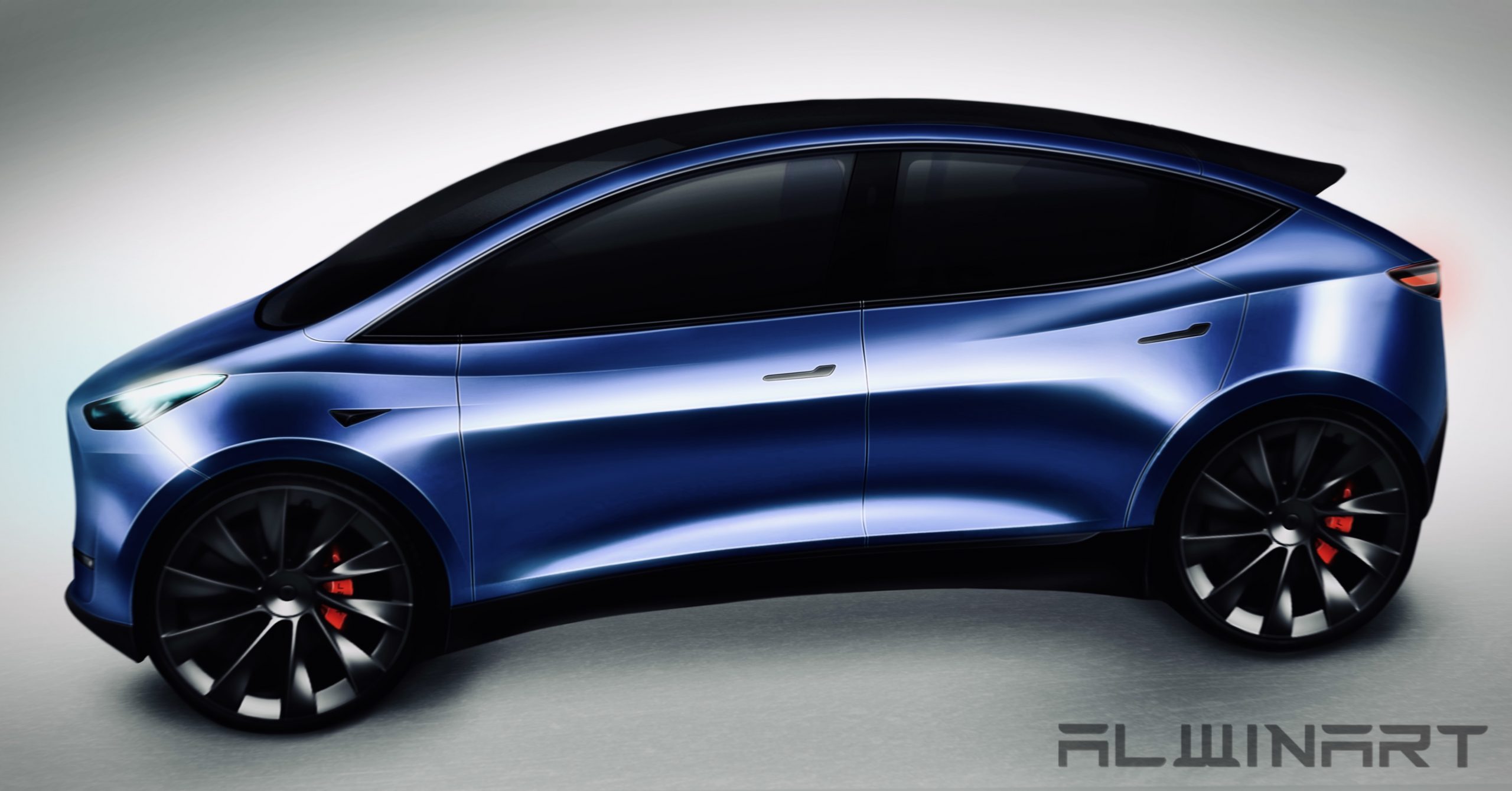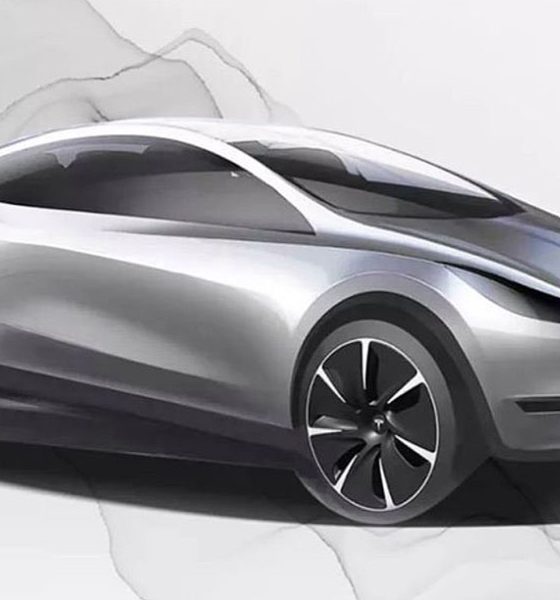Tesla CEO Elon Musk said the automaker’s next vehicle platform will exceed Model 3 and Model Y production output, be roughly half the cost of the Model 3 and Model Y platforms, and be smaller in size.
Musk and other Tesla executives were asked about any potential developments from the next generation of Tesla vehicles. The question mentioned the dramatic drop in cost from the Model S and Model X platform to the Model 3 and Model Y platform. The Model 3 and Model Y brought Tesla’s electric vehicles to levels of mass affordability, which truly sparked the beginning of the transition to electric vehicles.
The Model 3 and Model Y are Tesla’s best-selling vehicles, accounting for 95 percent of the company’s total delivery mix for Q3, according to data from the automaker.
The retail investor asked whether Tesla’s third platform has an expected release date, along with what the company expected in terms of the total reduction in cost.
Earlier in the call, Tesla’s executives fielding questions during the Q3 Earnings Call scoffed at the idea of revealing development timelines for future vehicles and plans of the vehicle roadmap. Musk said the company was always moving forward with developments but was unwilling to give any specific details.
However, more color was offered from the Tesla CEO when he was asked about the company’s third vehicle platform.
It will exceed Tesla Model 3 and Model Y production output

Tesla Model Y production at Gigafactory Texas (Credit: Tesla)
Musk said the third-generation Tesla vehicle would be produced in quantities that outshine the Model 3 and Model Y. In fact, it would outpace manufacturing of all other Tesla vehicles combined.
This may be due to the vehicle’s size, which we’ll get to later. However, it is a true testament to Musk’s belief in Tesla’s manufacturing. With the utilization of one-piece castings, the Giga Press, and other manufacturing techniques, Tesla truly outshines many companies in terms of manufacturing efficiency. However, the company has still struggled with the build quality of its cars, which has been an issue for several years.
“Tesla will be head and shoulders above everyone else in manufacturing, that is our goal.” -Elon Musk
Tesla’s current annual production capacity is listed at roughly 1.9 million units. This figure is reflected in the Q3 2022 Shareholder Deck, which was released on October 19.
It will be roughly half the cost of the Tesla Model 3 and Model Y platform
Tesla’s goals reflected in Elon Musk’s Master Plan revealed a trickle-down pricing strategy that would ultimately see premium-priced vehicles fund projects for more affordable cars down the line. The 2008 Roadster led to the Model S and Model X, which led to the Model 3 and Model Y.
Each vehicle chapter became more affordable, helping surge the adoption of electric vehicles. Musk confirmed the next vehicle platform will be roughly half the cost of the Model 3 and Model Y, bringing up flashbacks of the rumored $25,000 Tesla.
Elon Musk unveiling the Model 3 in March 2016
Musk neither confirmed nor denied that Tesla was developing a $25,000 model during the Q4 and Full Year 2021 Earnings Call in January. However, he did confirm on the Q3 call that the next vehicle platform is “the primary focus of the vehicle development team.”
The next vehicle is also fully expected to be used as the fully autonomous Robotaxi, which is still a few years away. However, the vehicle is not likely to come within the two years, as Tesla is turning its focus to ramping Cybertruck manufacturing and Semi production, which it targets to be 50,000 by 2024.
It will be Tesla’s smallest vehicle
Musk said that the new vehicle platform would also be smaller in size, as it would also help cut the total cost of the vehicle.
However, projections of what the $25,000 model would look like are usually smaller and more compact than the Model 3.
Credit: Alwinart/Twitter
While these are not officially Tesla designs, what is illustrated above is likely a similar size to what the company will bring to the table for the $25,000 model. The cost reduction can start at the dimensions of the vehicle overall, which will cut costs significantly. However, the real reduction comes from developing new batteries and the scaling of production. Musk also detailed on the Q3 Earnings Call that he still sees a path to a potential $70 per kWh cell, which is 30 percent less expensive than the projected “price parity” number, which lies at $100 per kWh. This, in theory, would bring EVs to the same cost as gas cars.
I’d love to hear from you! If you have any comments, concerns, or questions, please email me at joey@teslarati.com. You can also reach me on Twitter @KlenderJoey, or if you have news tips, you can email us at tips@teslarati.com.

News
Tesla is not sparing any expense in ensuring the Cybercab is safe
Images shared by the longtime watcher showed 16 Cybercab prototypes parked near Giga Texas’ dedicated crash test facility.

The Tesla Cybercab could very well be the safest taxi on the road when it is released and deployed for public use. This was, at least, hinted at by the intensive safety tests that Tesla seems to be putting the autonomous two-seater through at its Giga Texas crash test facility.
Intensive crash tests
As per recent images from longtime Giga Texas watcher and drone operator Joe Tegtmeyer, Tesla seems to be very busy crash testing Cybercab units. Images shared by the longtime watcher showed 16 Cybercab prototypes parked near Giga Texas’ dedicated crash test facility just before the holidays.
Tegtmeyer’s aerial photos showed the prototypes clustered outside the factory’s testing building. Some uncovered Cybercabs showed notable damage and one even had its airbags engaged. With Cybercab production expected to start in about 130 days, it appears that Tesla is very busy ensuring that its autonomous two-seater ends up becoming the safest taxi on public roads.
Prioritizing safety
With no human driver controls, the Cybercab demands exceptional active and passive safety systems to protect occupants in any scenario. Considering Tesla’s reputation, it is then understandable that the company seems to be sparing no expense in ensuring that the Cybercab is as safe as possible.
Tesla’s focus on safety was recently highlighted when the Cybertruck achieved a Top Safety Pick+ rating from the Insurance Institute for Highway Safety (IIHS). This was a notable victory for the Cybertruck as critics have long claimed that the vehicle will be one of, if not the, most unsafe truck on the road due to its appearance. The vehicle’s Top Safety Pick+ rating, if any, simply proved that Tesla never neglects to make its cars as safe as possible, and that definitely includes the Cybercab.
Elon Musk
Tesla’s Elon Musk gives timeframe for FSD’s release in UAE
Provided that Musk’s timeframe proves accurate, FSD would be able to start saturating the Middle East, starting with the UAE, next year.

Tesla CEO Elon Musk stated on Monday that Full Self-Driving (Supervised) could launch in the United Arab Emirates (UAE) as soon as January 2026.
Provided that Musk’s timeframe proves accurate, FSD would be able to start saturating the Middle East, starting with the UAE, next year.
Musk’s estimate
In a post on X, UAE-based political analyst Ahmed Sharif Al Amiri asked Musk when FSD would arrive in the country, quoting an earlier post where the CEO encouraged users to try out FSD for themselves. Musk responded directly to the analyst’s inquiry.
“Hopefully, next month,” Musk wrote. The exchange attracted a lot of attention, with numerous X users sharing their excitement at the idea of FSD being brought to a new country. FSD (Supervised), after all, would likely allow hands-off highway driving, urban navigation, and parking under driver oversight in traffic-heavy cities such as Dubai and Abu Dhabi.
Musk’s comments about FSD’s arrival in the UAE were posted following his visit to the Middle Eastern country. Over the weekend, images were shared online of Musk meeting with UAE Defense Minister, Deputy Prime Minister, and Dubai Crown Prince HH Sheikh Hamdan bin Mohammed. Musk also posted a supportive message about the country, posting “UAE rocks!” on X.
FSD recognition
FSD has been getting quite a lot of support from foreign media outlets. FSD (Supervised) earned high marks from Germany’s largest car magazine, Auto Bild, during a test in Berlin’s challenging urban environment. The demonstration highlighted the system’s ability to handle dense traffic, construction sites, pedestrian crossings, and narrow streets with smooth, confident decision-making.
Journalist Robin Hornig was particularly struck by FSD’s superior perception and tireless attention, stating: “Tesla FSD Supervised sees more than I do. It doesn’t get distracted and never gets tired. I like to think I’m a good driver, but I can’t match this system’s all-around vision. It’s at its best when both work together: my experience and the Tesla’s constant attention.” Only one intervention was needed when the system misread a route, showcasing its maturity while relying on vision-only sensors and over-the-air learning.
News
Tesla quietly flexes FSD’s reliability amid Waymo blackout in San Francisco
“Tesla Robotaxis were unaffected by the SF power outage,” Musk wrote in his post.

Tesla highlighted its Full Self-Driving (Supervised) system’s robustness this week by sharing dashcam footage of a vehicle in FSD navigating pitch-black San Francisco streets during the city’s widespread power outage.
While Waymo’s robotaxis stalled and caused traffic jams, Tesla’s vision-only approach kept operating seamlessly without remote intervention. Elon Musk amplified the clip, highlighting the contrast between the two systems.
Tesla FSD handles total darkness
The @Tesla_AI account posted a video from a Model Y operating on FSD during San Francisco’s blackout. As could be seen in the video, streetlights, traffic signals, and surrounding illumination were completely out, but the vehicle drove confidently and cautiously, just like a proficient human driver.
Musk reposted the clip, adding context to reports of Waymo vehicles struggling in the same conditions. “Tesla Robotaxis were unaffected by the SF power outage,” Musk wrote in his post.
Musk and the Tesla AI team’s posts highlight the idea that FSD operates a lot like any experienced human driver. Since the system does not rely on a variety of sensors and a complicated symphony of factors, vehicles could technically navigate challenging circumstances as they emerge. This definitely seemed to be the case in San Francisco.
Waymo’s blackout struggles
Waymo faced scrutiny after multiple self-driving Jaguar I-PACE taxis stopped functioning during the blackout, blocking lanes, causing traffic jams, and requiring manual retrieval. Videos shared during the power outage showed fleets of Waymo vehicles just stopping in the middle of the road, seemingly confused about what to do when the lights go out.
In a comment, Waymo stated that its vehicles treat nonfunctional signals as four-way stops, but “the sheer scale of the outage led to instances where vehicles remained stationary longer than usual to confirm the state of the affected intersections. This contributed to traffic friction during the height of the congestion.”
A company spokesperson also shared some thoughts about the incidents. “Yesterday’s power outage was a widespread event that caused gridlock across San Francisco, with non-functioning traffic signals and transit disruptions. While the failure of the utility infrastructure was significant, we are committed to ensuring our technology adjusts to traffic flow during such events,” the Waymo spokesperson stated, adding that it is “focused on rapidly integrating the lessons learned from this event, and are committed to earning and maintaining the trust of the communities we serve every day.”










